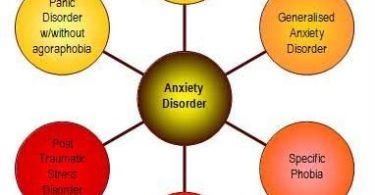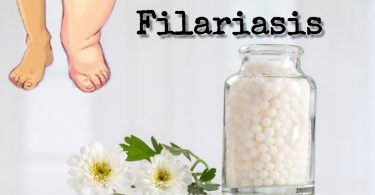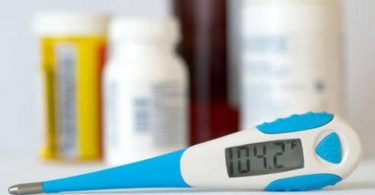GUILLAIN BARRE SYNDROME
Guillain barre syndrome is an acute frequently severe and fulminent polyradiculoneuropahty characterised by muscular weakness and mild distal sensory loss, It occurs year round at a rate of between 1 and 4 cases per 100,000 annually. Males are at slightly higher risk for GBS than females.
GBS is the most common acquired inflammatory neuropathy. Although the cause is not fully understood, it is thought to be auto immune. There are several varients. In some demyelination predominates, others affects the axon.
In about 2/3rd of the patients the syndrome begins 5 days to 3 weeeks after a banel infectious disease, surgery or vaccination. Infection is the trigger in >50% of patients. Common pathogens include Campylobacter jejuni , enteric viruses, herpes viruses, ( including CMV & EBV) , ad mycoplasma sp. A cluster of cases followed the swine flu vaccination programme in 1975.
SUB TYPES OF GBS:
1. Acute inflammatory demyelinating polyneuropathy(AIDP): adults affected more than children, recovery rapid, anti GM1 antibodies ( 50% of cases with severe disease. Dehydration and under-nutrition may result. Respiratory paralysis severe enough to require endotracheal intubation and mechanical ventilation occurs in 5-10%
A few patients have significant, life threatening autonomic dysfunction causing BP fluctuation, inappropriate ADH secretion, cardiac arrhythmias, GI stasis, urinary retention and pupillary changes. An unusual variant may cause only ophthalmoparesis, ataxia, and areflexia.
DIAGNOSIS
Clinical evaluation
Electro diagnostic testing
CSF Analysis
DIFFERENTIAL DIAGNOSIS
Myasthenia gravis- intermittent and worsened by exertion
Botulism- may cause fixed dilated pupils and prominent cranial nerve dysfunction with normal sensation
Poliomyelitis- usually occurs as epidemics
Tick paralysis- causes ascending paralysis but spares sensation
Metabolic neuropathies occur with a chronic metabolic disorder.
In GBS initial electrodiagnostic testing detects slow nerve conduction velocities and evidence of segmental demyelination in two thirds of patients; however, normal results do not exclude the diagnosis and should not delay the treatment.
CSF analysis may detect albuminocytologic dissociation, but it may not appear for upto 1 week and does not develop in 10% of patients.
PROGNOSIS:
This syndrome is fatal in <25 cases. Most patients improve considerably over a period of months. After initial improvement 3-10% of patients develop chronic inflammatory demyelinating poly neuropathy.
HOMOEPATHIC THERAPEUTICS
1. CONIUM: It is an excellent remedy for ascending paralysis. There may be difficult gait, trembling; sudden loss of strength while walking, painful stiffness of legs etc.There may be weakness of body and mind. Muscular weakness; especially of lower extremities. Putting feet on a chair relieves pain.
2. LATHYRUS: Affects the lateral and posterior columns of the cord. Does not produce pain. Reflexes are always increased. Paralytic affections of lower extremities. After influenza and wasting, exhaustive diseases where there is much weakness and heaviness, slow recovery of nerve power. Tremulous, tottering gait. Excessive rigidity of legs. Spastic gait. Knees knock each other when walking. Cramps in legs aggravation cold. Cannot extend or cross legs when sitting. Gluteal muscles and lower limbs emaciated.
3. PHOSPHORUS: ascending sensory and motor paralysis from ends of fingers and toes. Burning of feet. Weakness and trembling from every exertion. Can scarcely hold anything with his hands. Arms and hands become numb. Can be only on right side. Post diphtheritic paralysis. Joints suddenly give way.
4. THUJA: When walking, limbs feel as if made of wood or glass and would break easily. Muscular twitching, weakness and trembling. Cracking in the joints. Pain in heels and tendo-Achilles.
5. CARCINOSIN: When apparently well indicated remedy fails to cure a case or produce a temporary amelioration carcinosin acts as complementary drug. Family history of cancer, Diabetes, syphilis or any other degenerative condition is traced, if symptoms agree carcinosin should be thought of. Personal history of recurrent attack of bronchitis, pneumonia, wooping cough in childhood, even tendency to suffer repeatedly from measles, chicken pox, diphtheria, mumps, and tonsils in very early life is an indication for carcinosin.
Craving or aversion to salt, sweet, milk, egg, meat, fat and fruits.
Great desire to lie on the chest or knee-elbow position.
Tendency to insomnia in children occurring in early age.
Mind: There may be a back ground of fright, prolonged fear or unhappiness. Mental troubles may originate from anticipation.
Mentally the patient is very intelligent and artistic or very dull and idiotic. Display of spontaneous sympathy to others (phos) . The child if reprimanded reacts either mentally or physically or through both.
6.ALUMINA: Pain in arm and fingers, as if hot iron penetrated. Arms feel paralysed. Legs feel asleep, especially when sitting with legs crossed. Staggers on walking. Heels feel numb. Inability to walk, except when eyes are open or day time. Spinal degeneration and paralysis of limbs.
7. ARS ALB: Trembling, twitching, spasms, weakness, heaviness and uneasiness of extremities. Cramps in calves. Burning pains. Paralysis of lower limbs with atrophy.
8. CAUSTICUM: Paralysis of single parts. Heaviness and weakness. Unsteadiness of muscles of forearm and hand. Numbness and loss of sensation of hands. Contracted tendons, burning in joints. Slow learning to walk and unsteady walking and easy falling. Restless legs at night.
9.COCCULUS: Trembling and pain in limbs, one side paralysis, < after sleep. Hands are alternately hot and cold; knees crack on motion, lower limbs very weak.
10. GELSEMIUM: It causes motor paralysis. General prostration. Dizziness, drowsiness, dullness and trembling. Paralysis of various groups of muscles. Post diphtheritic paralysis. Muscular weakness. Lack of muscular co-ordination, fatigue after slight exercise.
Dr Jyothi S Chandran BHMS (MD)
Dept of homoeopathic Materia Medica
Father muller homoeopathic medical college, mangalore





